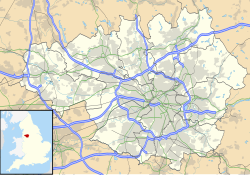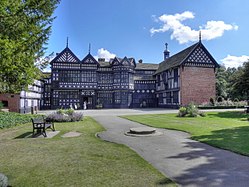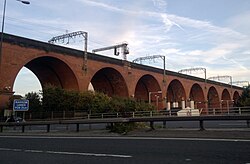| New Hall | |
|---|---|
 New Hall, Woodford | |
| General information | |
| Location | Woodford, Greater Manchester, England |
| Coordinates | 53°19′59″N2°10′05″W / 53.333093°N 2.168041°W |
| Completed | 1630 |
| Technical details | |
| Material | Brick, stone, slate |
| Designations | |
Listed Building – Grade II* | |
| Official name | New Hall Farm |
| Designated | 8 August 1966 |
| Reference no. | 1260441 [1] |
New Hall is a 17th-century house in Woodford, in the Metropolitan Borough of Stockport, Greater Manchester, England. Above the door there is a Tudor-arched lintel with the date '1630' along with the initials 'WDED' (William and Elizabeth Davenport) and the family shield. [1] Another branch of the Davenport family owned Bramall Hall in nearby Bramhall. The house, along with an adjoining cottage, is a Grade II* listed building. [1]





